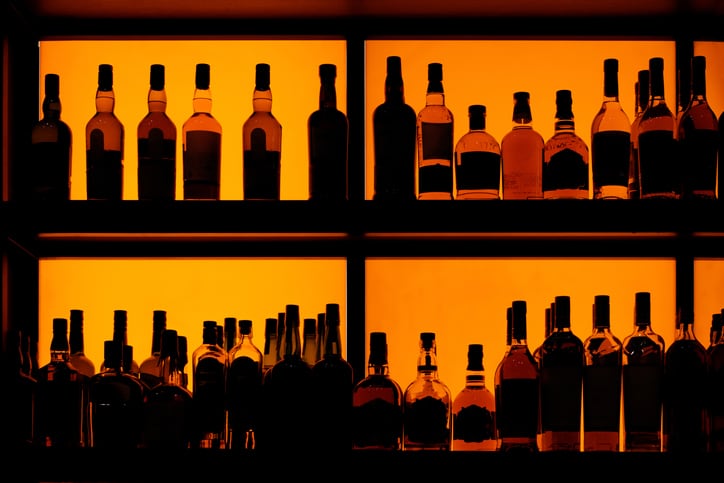Picture this: it’s a warm summer afternoon, and your customer is grilling in their backyard. They open the bottle of wine that they purchased online. When they sit down to their meal and take a sip of that wine, to their surprise, instead of the wine being a good rich-tasting merlot, it has no flavor. Or imagine that your customer is celebrating an event with their friends, and the pricey bourbon they purchased to share at the festivities has a chemical taste—that is definitely not bourbon...
According to a recent article in USA Today, alcohol sales are up 54% since the beginning of the Covid pandemic. Furthermore, a Forbes article noted that online alcohol sales have increased by 80%. Unfortunately, with the increase in e-commerce, so have the opportunities for counterfeit products.
So, I ask: What’s in your drink?
With the pandemic and its subsequent decline in travel, consumers have shifted to online ordering, creating an increased opportunity for counterfeiting liquor and wine. Counterfeit alcohol has been reported to be laced with substances such as embalming fluid, battery acid, or methanol, a synthetic chemical used to make antifreeze that can be lethal to humans.
The counterfeit market takes place at two levels. The first is the reuse of authentic liquor bottles. The empty bottles of spirits and wine are resold on the black market, refilled with a lesser quality product, and sold as a top-shelf product. The second is selling a counterfeited liquor made with low-quality ingredients, bottled, and sold with what looks like an authentic label from a known brand.
In either case, according to the International Alliance for Responsible Drinking (IARD), these beverages are generally produced illegally because they are far cheaper to produce than legal, branded products.
How to know which products are fake and which products are real?
It has been widely reported that tourists visiting Caribbean islands got sick from the beverages they drank. Some people fell ill. Others had significantly more issues ending up in a hospital or worse.
While at a bar, the counterfeit or bootleg liquor can easily be poured into a bottle and sold as high-end liquor. Unfortunately, these nefarious actions are exceedingly challenging to track. These activities are not just taking place in the Caribbean. Investigations have found deaths in the UK, Africa, India, Indonesia, and other countries linked to counterfeit alcohol. SafeProof.org reports that no brand is immune from being counterfeited and that counterfeiters replace labels and bottle caps with look a-like labels and bottle caps. The Mexican government has asked consumers to break the liquor bottles after usage to prevent the old bottles from ending up on the black market to be filled with counterfeit liquor.
Preventing Counterfeiting with Intelligent Next-Generation Labeling
The most effective way to prevent counterfeiting to use a smart labeling and a track and trace system to verify that the information on the label is valid. By adding an intelligent label with a serialized bar code to the bottle, the product can be traced from the point of manufacturing through distribution and retail.
Track and trace systems use unique product identifiers—such as serial numbers—to track individual products throughout the supply chain, from production to end consumers. It also helps manufacturers significantly reduce counterfeiting by ensuring products can be easily identified. Modern track and trace systems are cloud-based and provide 24/7/365 access for product verification.
Labeling technology solutions that are most successful against counterfeiters are multi-faceted and therefore, nearly impossible to replicate. They combine both overt and covert labels into the package decoration, incorporate unique holograms, take a fingerprint of the label, leverage GS1 barcoding for serialization—and utilize the consumer’s smartphone via an app to authenticate the product.
Advanced labeling solutions allow consumers to use their mobile devices to scan the label’s unique barcode, revealing hidden information that is analyzed and validated to determine the product’s authenticity. Within an instant, a consumer will know whether their bottle contains fake liquor or wine or not.

Counterfeiting will indeed continue to rise as the pandemic lingers, as will the need for smart labeling. The use of intelligent next-generation labeling solutions gives consumers the tools to immediately authenticate a product and help mitigate the risk of drinking dangerous counterfeit alcohol.
About the author: Ron Ducharme (right) serves as Vice President of Business Development at Covectra, a company working in track and trace solutions.

